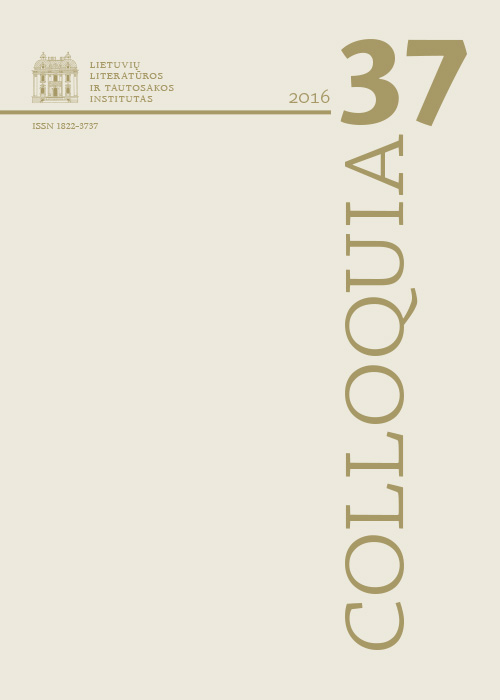Teatrinių eksperimentų intertekstai Kosto Ostrausko dramose
Santrauka
Straipsnyje aptariami teatrinių eksperimentų kontekstai Kosto Ostrausko dramose. Siekiama identifikuoti, kokie konkretūs eksperimentiniai meno reiškiniai, kuriuos perėmė šiuolaikinis teatras, yra patekę į Ostrausko kūrybos lauką ir tapę intertekstu. Analizuojant dramas aiškinamasi, kokias reikšmes šie intertekstai kuria Ostrausko dramose: dadaistinė Marcelio Duchampo skultptūra „Fontanas“ (mikrodramoje „Instaliacija“), Jurgio Mačiūno performansas „Piano activities“ (mikrodramoje „Fluxus“), Johno Cage’o tylos pjesės (mikrodramoje „Paskutinis monologas“ ir kt.), performansuose veikiantis kūnas ir kt. Išryškinamos slinktys, kurios leidžia pamatyti Ostrausko tekstuose fiksuojamą vis glaudesnį santykį su performatyviais teatro reiškiniais. Ostrausko dramų analizė patvirtina hipotezę, kad į jo dramos diskursą įtraukti teatriniai eksperimentai atskleidžia performatyviajam teatrui būdingus bruožus: personažo ir publikos sąveiką, vizualinių elementų įveiksminimą, perėjimą nuo verbalinės kalbos prie kūno kalbos.
Atsisiuntimai
Skaitomiausi šio autoriaus(ų) straipsniai
- Aušra Martišiūtė-Linartienė, Jūros vaizdinys Mikalojaus Konstantino Čiurlionio ir Vydūno pasaulio sutvėrimo meninėje programoje , Colloquia: T 46 (2021)
